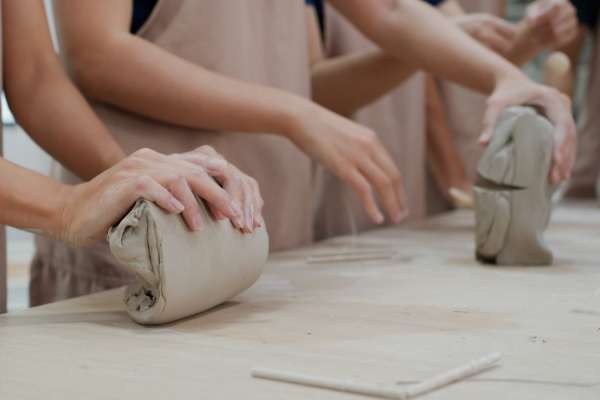
Jul 3,2023
Ceramics have been an essential part of human civilization for thousands of years. These remarkable materials have many applications, from pottery and construction to advanced technological fields. In this blog, we will explore the three fundamental components that makeup ceramics, shedding light on their properties and significance. Whether you're a curious enthusiast or a professional, understanding these components will enhance your knowledge of ceramics' composition and potential.
In ceramics, three primary components form the backbone of these remarkable materials. Let's delve into each one, exploring their unique properties and contributions.
Clay is the fundamental building block of ceramics. It is a fine-grained natural material composed primarily of hydrous aluminum silicates, often mixed with other minerals. Due to its plasticity when wet and its ability to harden when fired, clay is widely used in pottery, brick-making, and sculpture.
Clay possesses remarkable properties that contribute to the overall characteristics of ceramics. Its particle size, mineral composition, and water content determine the final product's plasticity, shrinkage, and firing behavior. These attributes allow artisans and engineers to shape clay into various forms, from delicate porcelain to robust bricks.
Silica, also known as silicon dioxide (SiO2), is another critical ceramics component. It is abundant in nature, found in minerals like quartz and sand. Silica acts as a stabilizing agent, preventing the clay particles from fusing completely during the firing process. This helps maintain the desired shape and structure of the ceramic material.
The addition of silica also enhances the mechanical strength of ceramics, making them more resistant to deformation and breakage. Its high melting point ensures the ceramic retains its shape and integrity even under high-temperature conditions.
Feldspar is a group of minerals rich in aluminum silicates, sodium, potassium, and calcium. It acts as a fluxing agent in ceramics, lowering the materials' melting point during firing. By facilitating the fusion of different components, feldspar enables the formation of a dense, vitrified structure in ceramics.
Additionally, feldspar plays a vital role in determining ceramics' color and aesthetic qualities. Different types of feldspar impart distinct hues, ranging from creamy white to vibrant reds and blues, adding to the visual appeal of the final product.
Now that we better understand the three basic components of ceramics, let's explore their applications across various industries and the advantages they offer.
Ceramic materials find extensive use in the construction and architecture sectors. From bricks and tiles to decorative elements, ceramics provide durability, heat resistance, and aesthetic appeal to buildings. Ceramic tiles, for example, are valued for their waterproofing properties, making them ideal for bathrooms and kitchens.
Ceramics with excellent electrical insulation properties are widely used in electronics and engineering applications. They serve as substrates for microchips, insulators for power transmission lines, and components for sensors and capacitors. The stability of ceramics under high temperatures and corrosive environments makes them indispensable in these fields.
Ceramics play a vital role in the medical and biotechnology sectors. Bioinert ceramics, such as alumina and zirconia, are used for dental implants and joint replacements due to their biocompatibility and mechanical strength. Porous ceramics find applications in bone tissue engineering and drug delivery systems.
Ceramics, with their remarkable properties and versatility, have proven to be invaluable across numerous industries. From their use in everyday items to cutting-edge technologies, ceramics continue to evolve and push the boundaries of what is possible. By understanding the three basic components of ceramics – clay, silica, and feldspar – you gain insight into these remarkable materials' composition, properties, and applications.
Investing in ceramics means investing in quality, durability, and aesthetics. Whether you are a designer, engineer, or consumer, the limitless possibilities of ceramics make them a wise choice for your next project or purchase.